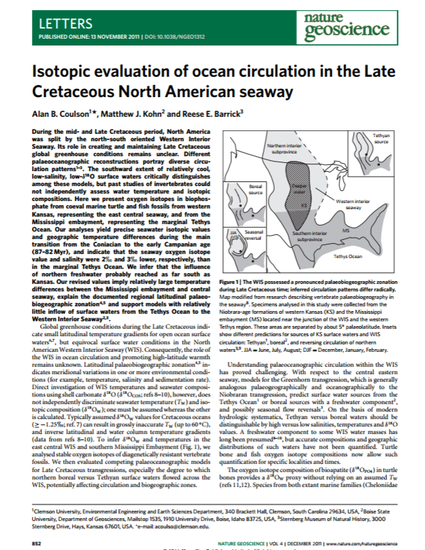
During the mid- and Late Cretaceous period, North America was split by the north–south oriented Western Interior Seaway. Its role in creating and maintaining Late Cretaceous global greenhouse conditions remains unclear. Different palaeoceanographic reconstructions portray diverse circulation patterns1, 2, 3. The southward extent of relatively cool, low-salinity, low-δ18O surface waters critically distinguishes among these models, but past studies of invertebrates could not independently assess water temperature and isotopic compositions. Here we present oxygen isotopes in biophosphate from coeval marine turtle and fish fossils from western Kansas, representing the east central seaway, and from the Mississippi embayment, representing the marginal Tethys Ocean. Our analyses yield precise seawater isotopic values and geographic temperature differences during the main transition from the Coniacian to the early Campanian age (87–82 Myr), and indicate that the seaway oxygen isotope value and salinity were 2‰ and 3‰ lower, respectively, than in the marginal Tethys Ocean. We infer that the influence of northern freshwater probably reached as far south as Kansas. Our revised values imply relatively large temperature differences between the Mississippi embayment and central seaway, explain the documented regional latitudinal palaeobiogeographic zonation4, 5 and support models with relatively little inflow of surface waters from the Tethys Ocean to the Western Interior Seaway2, 3.
Available at: http://works.bepress.com/matthew_kohn/16/
